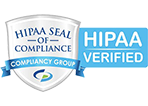5 Signs You Have Musculoskeletal Injuries After a Car Accident
Musculoskeletal injuries are caused by sudden impact or trauma to the bones, muscles, and joints. Injuries to the musculoskeletal system are common after a car accident, and they often go unnoticed in the immediate aftermath of a crash due to shock or adrenaline. Soon, they can become extremely painful and debilitating. It’s important to be aware of the signs of musculoskeletal injuries, so you can seek prompt medical attention and treatment. Read on to learn all about the common signs of musculoskeletal injuries after an accident.
1. Pain and Swelling
Pain and swelling are the most common signs of musculoskeletal injuries after an accident. If you’re experiencing pain, tenderness, or swelling in any part of your body, it’s important to seek medical attention as soon as possible. These symptoms could indicate a serious injury, such as a fracture or dislocation, or a soft tissue injury like a sprain or strain.
2. Limited Range of Motion
Another sign of musculoskeletal injuries is a limited range of motion. If you’re having trouble moving a joint or limb, or if you feel stiff or achy, it could be a sign of a deeper injury. This is especially important to note if it isn’t going away as the days go on.
3. Bruising and Discoloration
Visible bruising or discoloration on the skin can also indicate musculoskeletal injuries. This can happen in various ways after an accident, whether it be directly onto a body part or in a seat belt or shoulder harness. This could also indicate a serious injury such as a bone fracture or a deep tissue injury. If you notice any visible marks on your skin while experiencing other symptoms, seek medical attention.
4. Numbness or Tingling
If you’re experiencing numbness or tingling in a specific body part post-accident, it could indicate that the nerves have been damaged. This could also lead to weakness in the affected area, which makes it hard to complete everyday tasks. It’s important to address any nerve-related issues as soon as possible because they could get worse if left unaddressed.
5. Headaches and Dizziness
Finally, if you’re experiencing headaches or dizziness after an accident, it could be a sign of a concussion or other head injury. Head trauma is common in car accidents, and it’s important to get medical attention right away to rule out any serious injuries.
The Earlier You Treat a Musculoskeletal Injury, the Better
Musculoskeletal injuries are common after an accident and can often go unnoticed—that’s why it’s important to schedule a full medical evaluation after a crash, even if you feel no symptoms. The earlier you treat a musculoskeletal injury, the better your outcome. Call the caring team at Impact Medical Group of Brandon today at (813) 522-8885 to schedule your free medical exam.
